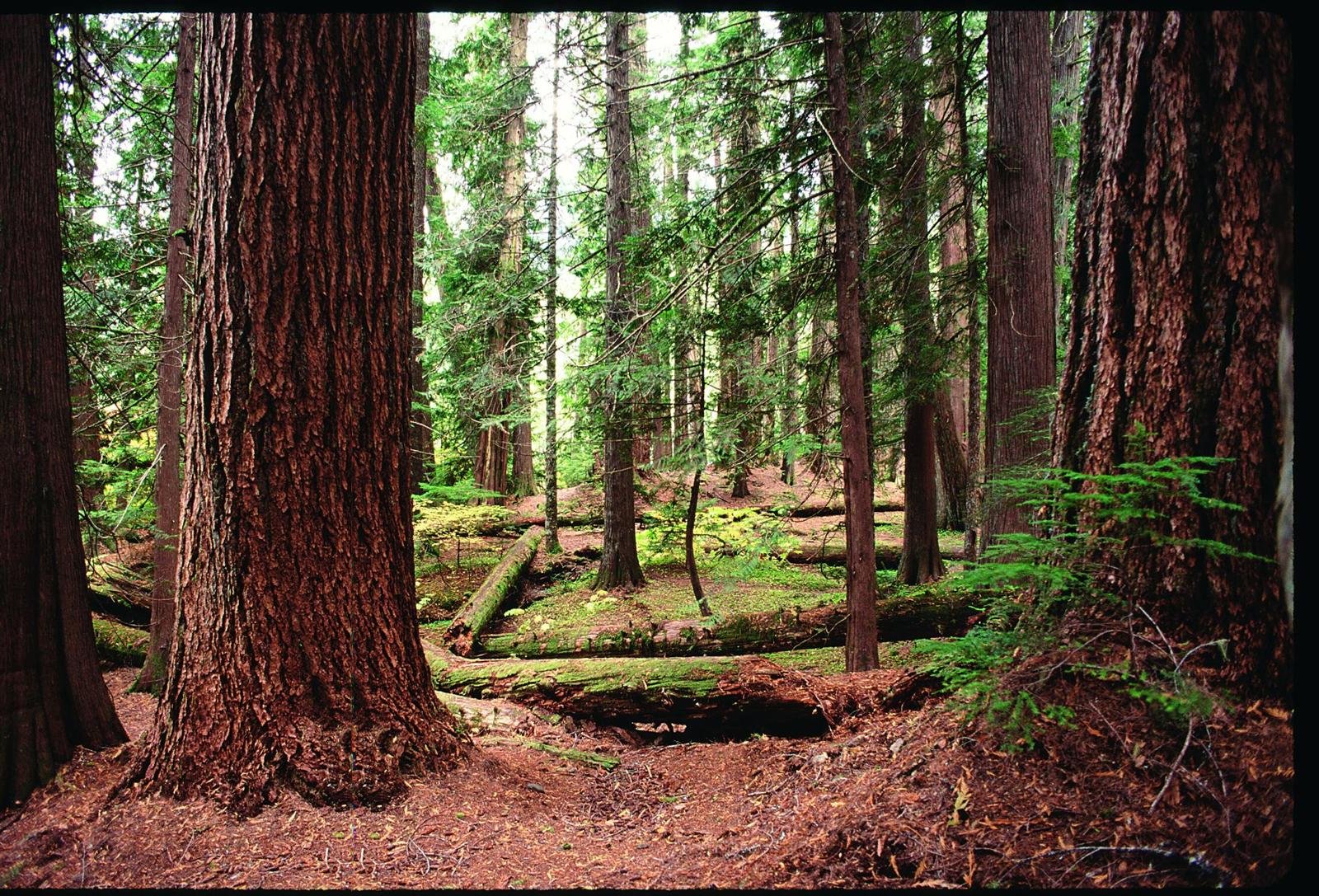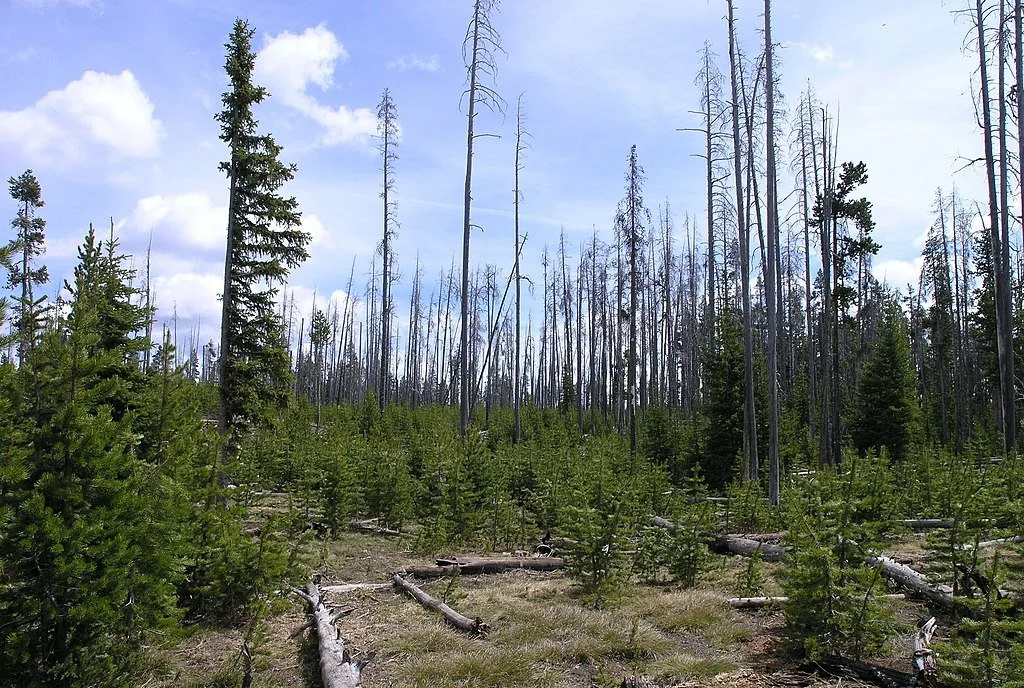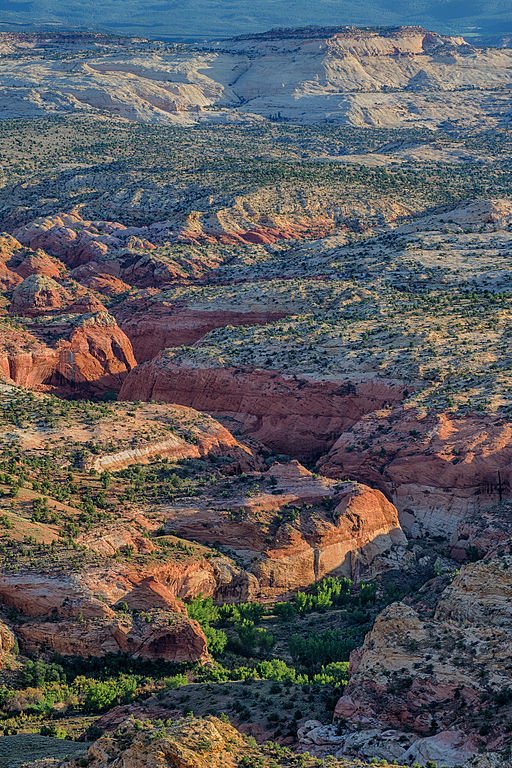Like bankruptcy, the death of the Northwest Forest Plan has proceeded slowly and might end quickly.
Read MoreThe Demise of Northwest Forest Plan

Ecological Reserves
Like bankruptcy, the death of the Northwest Forest Plan has proceeded slowly and might end quickly.
Read MoreKelp forests are extraordinarily important concentrations of biodiversity and are extremely threatened, along the Oregon coast and around the world.
Read MoreIf President Biden wants to be remembered in history for saving the nation’s remaining mature and old-growth forests and trees for the benefit of this and future generations, the Forest Service is going to have to do significantly more than what it has proposed so far.
Read MoreThe prospective defeminization/emasculation of the Northwest Forest Plan by the Forest Service is likely inevitable. All the more reason for the Biden administration to promulgate an enduring administrative rule that conserves and restores mature and old-growth forests.
Read MoreThe nation’s largest land manager is proposing a new “conservation” rule that might result in improved land management but more likely will serve as a shield for the agency to continue to degrade public lands at the expense of this and future generations.
Read MoreThis Part 3 suggests ways to partially—but significantly—bring back the magnificent old-growth forests that have long been lost.
Read MoreAs public lands conservationists continue their fight to save the last of the mature and old-growth forests for the benefit of this and future generations, we must not forget the preforests.
Read MoreUnderstanding the history of public lands is useful if one is to be the best advocate for the conservation of public lands.
Read MoreFor President Biden to ensure that 30 percent of the nation’s lands and waters are conserved by 2030, as he promised, the pace and scale of protections needs to increase dramatically.
Read MoreWe don’t have to despoil the environment and view off the shore of Oregon to produce carbon-free electricity.
Read MoreThis is the third of three Public Lands Blog posts on 30x30, President Biden’s commitment to conserve 30 percent of the nation’s lands and waters by 2030. In Part 1, we examined the pace and scale necessary to attain 30x30. In Part 2, we considered what constitutes protected areas actually being “conserved.” In this Part 3, we offer up specific conservation recommendations that, if implemented, will result in the United States achieving 30 percent by 2030.
Top Line: Enough conservation recipes are offered here to achieve 50x50 (the ultimate necessity) if all are executed, which is what the science says is necessary to conserve our natural security—a vital part of our national security.
Figure 1. The Coglan Buttes lie west of Lake Abert in Lake County, Oregon. According to the Bureau of Land Management, it “is a dream area for lovers of the remote outdoors, offering over 60,000 acres of isolation,” and the land is “easy to access but difficult to traverse.” The agency has acknowledged that the area is special in that it is a “land with wilderness characteristics” (LWCs), but affords the area no special protection. Congress could designate the area as part of the National Wilderness Preservation System (Recipe #24), or the Biden administration could classify it as a wilderness study area and also withdraw it from the threat of mining (Recipe #1). Source: Lisa McNee, Bureau of Land Management (Flickr).
Ecological realities are immutable. While political realities are mutable, the latter don’t change on their own. Fortunately, there are two major paths to change the conservation status of federal public lands: through administrative action and through congressional action.
Ideally, Congress will enact enough legislation during the remainder of the decade to attain 30x30. An Act of Congress that protects federal public land is as permanent as conservation of land in the United States can get. If properly drafted, an Act of Congress can provide federal land management agencies with a mandate for strong and enduring preservation of biological diversity.
If Congress does not choose to act in this manner, the administration can protect federal public land everywhere but in Alaska. Fortunately, Congress has delegated many powers over the nation’s public lands to either the Secretary of the Interior or the Secretary of Agriculture (for the National Forest System), and—in the sole case of proclaiming national monuments—the President.
Potential Administrative Action
Twenty-two recipes are offered in Table 1 for administrative action by the Secretary of the Interior, the Secretary of Agriculture, or the President. The recipes are not mutually exclusive, especially within an administering agency, but can be overlapping or alternative conservation actions on the same lands. While overlapping conservation designations can be desirable, no double counting should be allowed in determining 30x30. A common ingredient in all is that such areas must be administratively withdrawn from all forms of mineral exploitation for the maximum twenty years allowed by law.
Mining on Federal Public Lands
An important distinction between federal public lands with GAP 1 or GAP 2 status and those with lesser GAP status is based on whether mining is allowed. Federal law on mineral exploitation or protection from mining on federal public lands dates back to the latter part of the nineteenth century with the enactment of the general mining law. Today, the exploitation of federal minerals is either by location, leasing, or sale. The administering agency has the ability to say no to leasing and sale, but not to filing of mining claims by anyone in all locations open to such claiming.
When establishing a conservation area on federal lands, Congress routinely withdraws the lands from location, leasing, or sale. Unfortunately, when administrative action elevates the conservation status of federal public lands (such as Forest Service inventoried roadless areas or IRAs, Bureau of Land Management areas of critical environmental concern or ACECs, and Fish and Wildlife Service national wildlife refuges carved out of other federal land), it doesn’t automatically protect the special area from mining.
Congress has provided that the only way an area can be withdrawn from the application of the federal mining laws is for the Secretary of the Interior (or subcabinet officials also confirmed by Congress for their posts) to withdraw the lands from mining—and then only for a maximum of twenty years (though the withdrawal can be renewed). A major reason that particular USFS IRAs and BLM ACECs do not qualify for GAP 1 or GAP 2 status is that they are open to mining.
More Conservation in Alaska by Administrative Action: Fuggedaboutit!
The Alaska National Interest Lands Act of 1980 contains a provision prohibiting any “future executive branch action” withdrawing more than 5,000 acres “in the aggregate” unless Congress passes a “joint resolution of approval within one year” (16 USC 3213). Note that 5,000 acres is 0.0012 percent of the total area of Alaska. Congress should repeal this prohibition of new national monuments, new national wildlife refuges, or other effective administrative conservation in the nation’s largest state. Until Congress so acts, no administrative action in Alaska can make any material contribution to 30x30.
Potential Congressional Action
Twenty-two recipes are offered in Table 2 for congressional action. The recipes are not mutually exclusive, especially within an administering agency, but can be overlapping or alternative conservation actions on the same lands. However, they should not be double-counted for the purpose of attaining 30x30. A commonality among these congressional actions is that each explicitly or implicitly calls for the preservation of biological diversity and also promulgates a comprehensive mineral withdrawal.
Bottom Line: To increase the pace to achieve the goal, the federal government must add at least three zeros to the size of traditional conservation actions. Rather than individual new wilderness bills averaging 100,000 acres, new wilderness bills should sum hundreds of millions of acres—and promptly be enacted into law. Rather than a relatively few new national monuments mostly proclaimed in election years, many new national monuments must be proclaimed every year.
For More Information
Kerr, Andy. 2022. Forty-Four Conservation Recipes for 30x30: A Cookbook of 22 Administrative and 22 Legislative Opportunities for Government Action to Protect 30 Percent of US Lands by 2030. The Larch Company, Ashland, OR, and Washington, DC.
Two national monuments in Utah have been restored, but it isn’t over.
Read MoreSitka spruce are the mangrove trees of the northeastern Pacific Ocean shore. Never in the field of natural carbon storage has so much been owed by so many to so few tidal wetland acres—especially forested tidal swamps.
Read MoreBefore the European invasion, tidal wetlands of all kinds covered 0.06 percent of Oregon’s total area; today they cover just 0.03 percent.
Read MoreSea grasses, mangroves, and salt marshes along our coast “capture and hold” carbon, acting as something called a carbon sink. These coastal systems, though much smaller in size than the planet’s forests, sequester this carbon at a much faster rate, and can continue to do so for millions of years.
Read MoreUnfortunately, “America the Beautiful” represents a gross dereliction of the duty of the Biden administration to future generations.
Read MoreFigure 1. Some red cliffs in the Red Cliffs National Conservation Area. Source: Bureau of Land Management.
As the Trump administration was slithering out the door in mid-January, it issued decisions that would put a new 4.5-mile-long four-lane divided highway through both the Red Cliffs National Conservation Area and a particular stronghold for the imperiled Mojave desert tortoise.
Read MoreFigure 1. Goodbye, Senate Majority Leader Mitch McConnell (R-KY). Source: Wikipedia.
Fortunately, the Trump administration was generally so grossly incompetent at governing that most of the Trumpian rollbacks were, are being, or can be overturned through a combination of executive, judicial, and congressional actions.
Read MoreGrasslands get little respect. So easily are they converted to agriculture that grasslands are the least protected biome on Earth.
Read MoreSeveral mostly good public lands conservation bills have been introduced in the 115th Congress (2017–18) but languish in committee, unable to get a vote on the floor of the House or the Senate.
Read More














